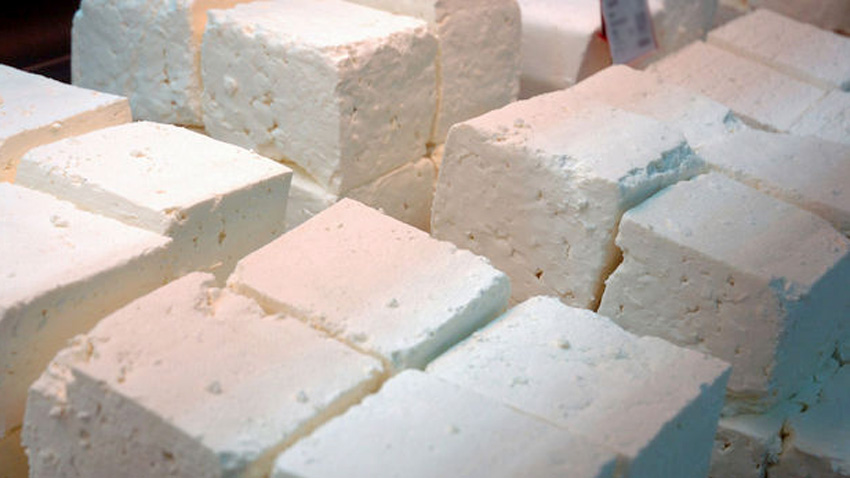How would the famous Bulgarian shopska salad taste if it were not covered abundantly with the delicious white brine cheese? The traditional Bulgarian breakfast also starts with a slice of toast and a piece of white cheese. The fluffy Bulgarian Banitsa (cheese and egg pastry) is also made with this traditional local product. Once, people who worked in the fields usually had cheese and bread for lunch. In the years marked by poverty and famine, the white brine cheese was the most luxurious product on the Bulgarian table.
Cheese is also part of the Bulgarian folklore. The proverb "Friendship is friendship but cheese costs money" is widely used in this country.
The word "cheese" in Bulgaria is usually used to describe the white brine cheese, whereas in other countries there are thousands of types of cheese and each one has its own unique characteristics depending on the type of milk used, the production technology and the place of manufacture.
 The secret of the traditional Bulgarian white brine cheese lies in the leaven made of Lactobacillus lactis and Lactobacillus casei bacteria. Bulgarians prefer to put on their table mainly white brine cheese, unlike the citizens of other European countries who consume various other types of cheese. White brine cheese and the yellow cheese (known in Bulgaria as kashkaval) are the main types of cheese in Bulgaria. After WW2 the Bulgarian dairy factories started gradually to produce and promote new dairy products such as Dunavia Cheese, Cream Cheese, Smoked cheese and Melted (or Processed) Cheese (natural or with added herbs and other seasoning).
The secret of the traditional Bulgarian white brine cheese lies in the leaven made of Lactobacillus lactis and Lactobacillus casei bacteria. Bulgarians prefer to put on their table mainly white brine cheese, unlike the citizens of other European countries who consume various other types of cheese. White brine cheese and the yellow cheese (known in Bulgaria as kashkaval) are the main types of cheese in Bulgaria. After WW2 the Bulgarian dairy factories started gradually to produce and promote new dairy products such as Dunavia Cheese, Cream Cheese, Smoked cheese and Melted (or Processed) Cheese (natural or with added herbs and other seasoning).
Until 1989, most of Bulgaria's cheese export was directed to the former Soviet Union and the Arab countries. Later, when Bulgaria entered the so-called transition period from communism to democracy, the number of dairy animals dwindled significantly. Meanwhile, the output of dairy products also decreased. The manufacturers changed the standard technologies for manufacture of white brine cheese and yellow cheese and shortened the period of maturing of those products. Producers also use powdered (dried) milk and vegetable fat, in order to make a low cost dairy product.
Recently, the number of high-quality white brine cheese has been increasing. There is a great variety of Bulgarian cheese in the local shops, but few are those which correspond to the standards. Yulia Madzharova, director of a Bulgarian cheese factory where products are made under the Bulgarian State Standard, told Radio Bulgaria that the local white brine cheese applied to receive an EU Certificate of Protected Geographical Indication, just like the dry-cured Elena fillet and the flat sausage from Gorna Oryahovitsa.
Currently, the world seems to associate the white brine cheese primarily with the Greek Feta Cheese. It is also made in other European countries such as France, Denmark and Great Britain, but Greece was the only country which managed to protect the Feta name as a product of Protected Geographical Indication.
What is the secret to the good white brine cheese? Here is what Mrs. Madzharova told Radio Bulgaria:
“Basically, you have to adhere to the standard technology. If you want to make a white cheese under the Bulgarian State Standard you have to use fresh milk, Bulgarian yeast and the cheese should mature for a minimum of 60 days, in order to gain the unique traditional flavor.”

What are the recent market trends? Did you notice any changes in the preferences and the taste of the Bulgarian consumer?
“The consumer's demand of traditional Bulgarian products has increased in the recent years. Bulgarian customers prefer to eat Bulgarian dairy products. However, producers also have to maintain a high quality of their products and preserve the standard of this unique product.”
Yulia Madzharova voiced hopes that as the quality of the traditional cheese improves, Bulgaria would resume its position on the foreign dairy markets.
“Unlike the yellow cheese (kashaval), the local white brine cheese has a very high potential on the foreign markets. It has been sold for many years on the European market and in the Arab countries. However, the local producers have to maintain their positions and try to expand on these markets. Currently, we focus on special advertising programs and presentations of traditional Bulgarian cheese. The dairy associations participate in food fairs where they have the opportunity to acquaint foreigners with the unique taste of the Bulgarian white brine cheese”, Mrs. Madzharova concludes.
English version Kostadin Atanasov
The Association of Bulgarian Schools in America invites children from the Bulgarian community in North America to participate in a competition dedicated to November 1 - National Awakeners' Day, the organization announced on its..
Robert Joseph Miller, Bulgaria’s Honorary Consul in Nevada, was awarded the prestigious “Golden Laurel Branch” of the Ministry of Foreign Affairs for his exceptional merits in maintaining the diplomatic relations between the US and Bulgaria. The award..
The cool autumn evenings give us a reason to immerse ourselves in the cosy atmosphere of restaurants in Sofia and try new flavours inspired by global culinary trends. Leading Italian travel platform praises Sofia in autumn..
Minister of the Environment and Water Manol Genov has granted two centuries-old trees – each of which approximately 200 years old – protected status,..
Bulgarian compatriot Nina Vasileva-Zaneshev is one of the examples among the diaspora abroad, who give us confidence that wherever they..

+359 2 9336 661
